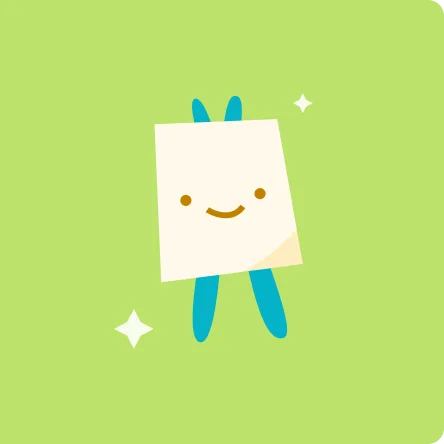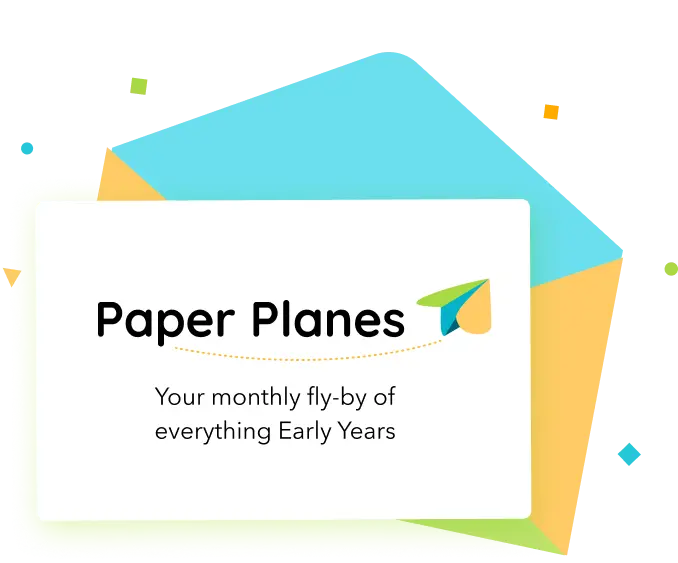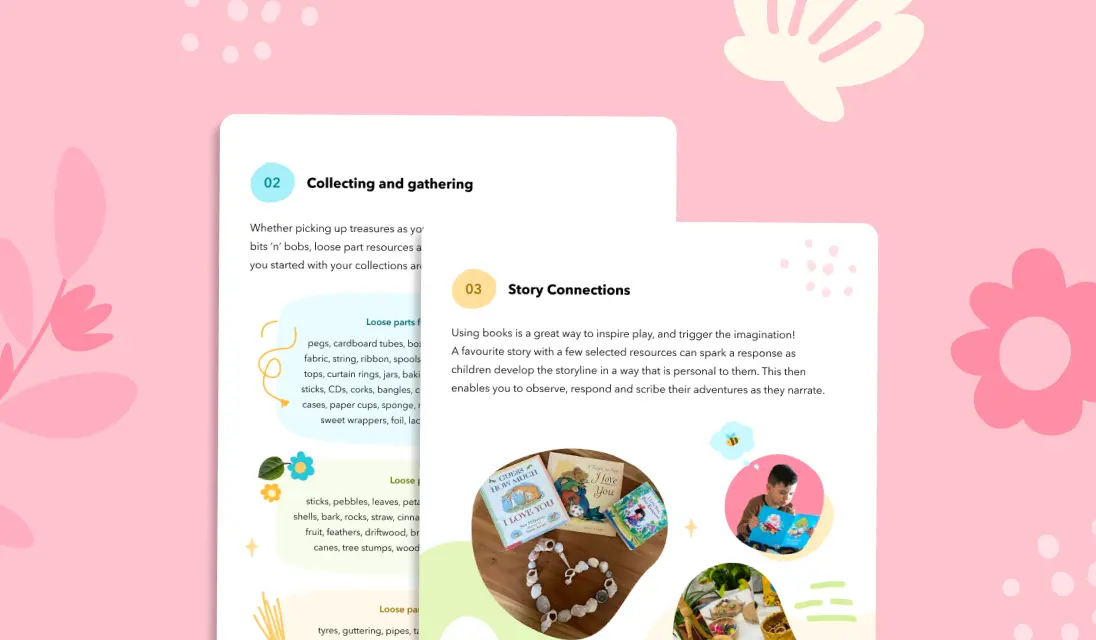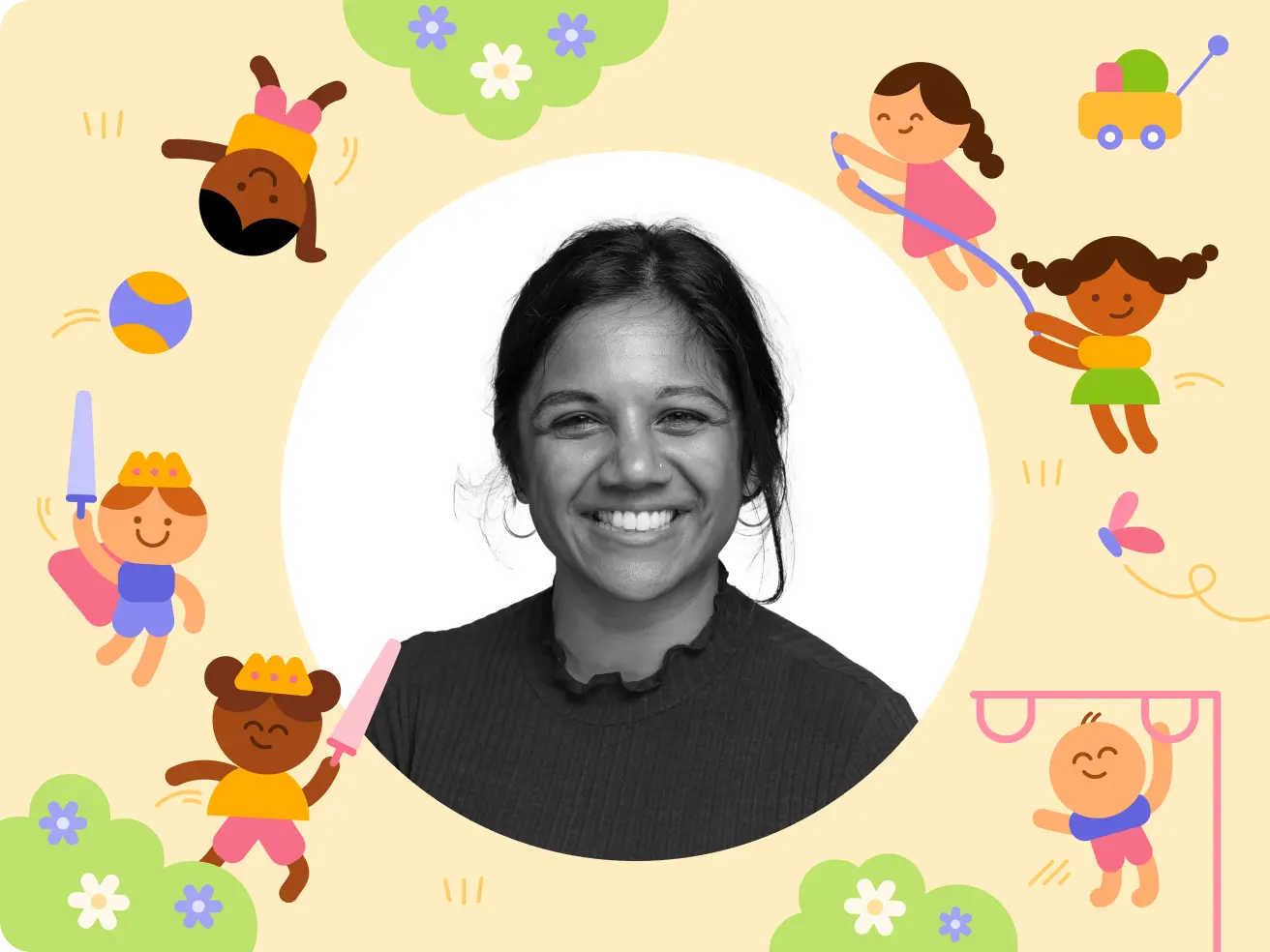It is widely acknowledged in early years pedagogy that the learning environment plays a significant role in supporting and extending children’s learning and development. By positioning the child as an active agent in their learning, the physical and conceptual space where this process unfolds becomes a powerful catalyst. The environment invites interaction with resources that stimulate critical thinking and foster discoveries. It evolves into a space where children find a sense of belonging and personal growth, all while their developmental needs are respected and supported.
This guide offers an opportunity to take a fresh look at your learning space and the interactions that occur within it. These resources will support you as you:
- Reflect on current practices
- Take action to make small but meaningful changes
- Adopt a more focused approach when designing the learning space
There are numerous considerations to be kept in mind while designing your learning space. These elements are not unique to any programme or curriculum, but instead can be applied to any play-based early years setting.
Bring pedagogy to life
The notion that the environment is akin to a “third teacher,” as articulated by Malaguzzi, underscores its pivotal role. This concept highlights how the environment itself reflects the ideas, values, attitudes, and cultural context of those who utilise the space. In essence, the design and organisation of the learning environment profoundly influence the experiences and outcomes for young learners. In Montessori classrooms, teachers create a “prepared environment” characterised by open spaces and easily accessible learning materials. Steiner preschools incorporate natural objects in play, art, display, and sensory learning experiences within their educational settings.
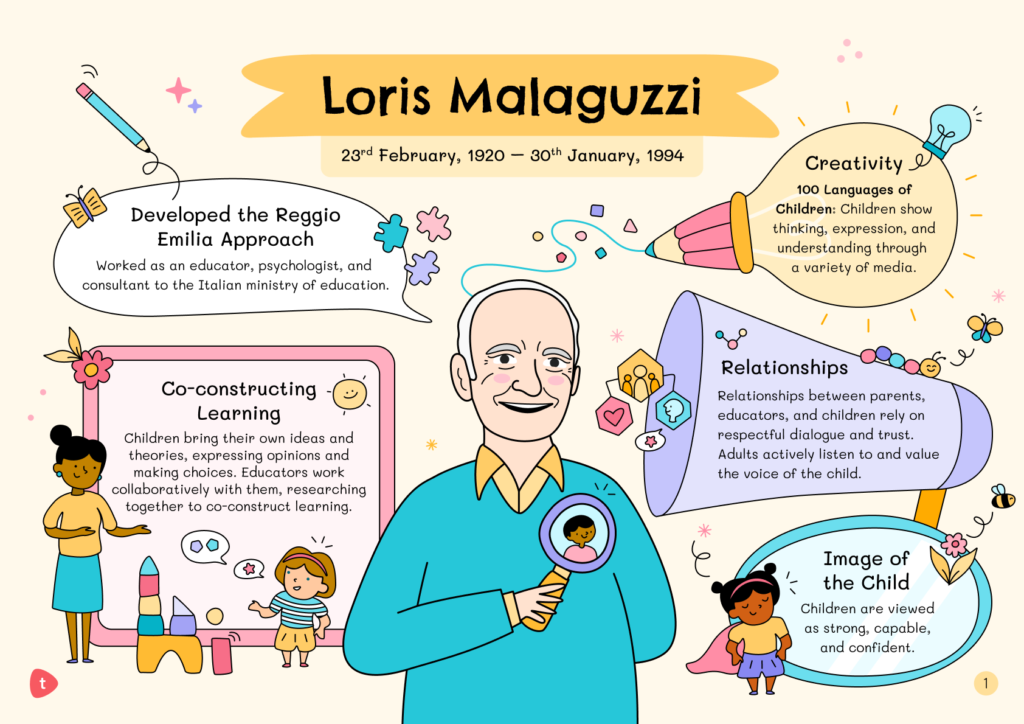
For early childhood educators, this presents an opportunity to draw from a rich selection of educational philosophies and methodologies. Learning spaces can be intentionally designed and curated to align with early childhood philosophies, whether rooted in Montessori principles, Reggio Emilia-inspired practices, or other educational philosophies. Regardless of the specific approach, the central tenet remains the same: an enabling and intentional environment plays an empowering role in the learning and development of children. Bridge the gap between theory and practice with our actionable Loris Malaguzzi poster that is sure to spark inspiration and help you transform your learning environment.

Be a reflective practitioner
Close your eyes and picture your happy place. In your mind’s eye, what do you see? It’s likely more than just the physical aspects of colour, furnishings, and texture that come to mind. It’s probably a feeling of warmth, an intangible ethos. Children can respond in a similar way when they enter a learning environment. A well-designed space has the power to energise or calm, nurture and engage, empower and provoke. When created with children in mind, and in harmony with child-centred pedagogy, the environment becomes an invaluable partner in the learning process.
Keep that feeling in mind as you contemplate your own learning space. Is it merely a location to convene, or a place to truly exist and evolve? Has it been hastily assembled, or is it the outcome of intentional design? Does it mirror your individual preferences and requirements, or does it respect and esteem children through their choices and ownership? These profound reflections are not yours to bear alone; when pondered collectively, they can serve as potent drivers of change.
We’ve crafted a series of workshops that provide a framework to facilitate reflection and dialogue among early years educators. Working as a team, they will collaboratively shape a shared vision regarding the role of the learning environment in early education, engage in constructive assessments of their current spaces, and collectively develop an action plan.
For early years administrators or coordinators, the next steps are simple:
- bring your teams together
- utilise these comprehensive workshop resources
- prepare some coffee and snacks (unfortunately, we can’t handle that part for you!)
We promise you, this will excite and elevate your learning environments to new heights, enriching the educational experience for both educators and young learners alike.

Transform your environment
Once you’ve established a vision for the purpose of your early years learning space, it’s time to ignite some creative thinking. This renewed enthusiasm should energise you, as you begin to implement practical changes. Sometimes, it can be challenging to envision the space as a whole. Therefore, we break this down into manageable steps, considering the physical aspects of the environment. Dive into four key areas of the physical learning environment: visual displays, vertical spaces, furniture and furnishings, and materials and resources.
Let’s explore each physical area a little further.
- Visual displays: Visual displays in early learning spaces serve as powerful tools for conveying information and celebrating learning. They can go beyond showcasing children’s artwork by illuminating the process of learning, making thinking visible, and celebrating the child’s voice. All of these aspects collectively reinforce a profound sense of value, ownership, and belonging. These displays also provide opportunities for children to reflect on their progress and share their knowledge with peers and caregivers, promoting a culture of celebration of learning.
- Vertical spaces: Vertical spaces play a vital role in motor development. Children, while climbing or interacting with objects on vertical surfaces, challenge and refine their fine and gross motor skills, leading to improved strength and control. This physical engagement not only fosters motor development but also boosts their self-confidence.
- Furniture and furnishings: The furniture and furnishings within the early years learning space are integral to its physical structure. Beyond the essential qualities of safety, durability, and hygiene, the choice of furniture is a powerful tool for providing flexibility and options.
Varied table heights offer the children the choice of sitting on the floor, kneeling, or standing, promoting diverse ways of engagement. Soft seating options like mats, cushions, and beanbags add comfort and versatility to the space. Open bookcases facilitate easy access to resources, empowering children with choices, while the addition of wheels on larger items allows for adaptability in rearranging the space to suit evolving needs.
In addition to the functional aspects, the thoughtful use of soft, natural colours fosters a sense of calm within the environment. Natural light further opens up the space, creating an atmosphere of openness and brightness. Alternatively, the inclusion of sheer fabrics and a set of fairy lights imparts a warm and inviting glow, adding a touch of magic to the learning environment. These considerations transform the learning space into a comfortable and inspiring backdrop for learning and development, fostering a serene and cosy environment. - Materials and resources: The materials and resources in the learning space serve multiple functions. They include sensory-rich items like playdough and tactile objects, which not only encourage sensory exploration but also foster social interaction when used collaboratively.
Furthermore, intriguing resources ignite curiosity, driving hands-on exploration and inquiry. Open-ended materials such as loose parts promote creativity, while real-life objects provide practical learning experiences as children make sense of the world around them.
Regardless of the resource, thoughtful curation enhances the learning environment by facilitating connection, meaning-making, creative engagement, and inquiry through play.

Develop vertical spaces
Harnessing the potential of vertical spaces in early childhood learning environments can be a game changer for children’s development. These spaces are not just walls; they are dynamic canvases for fostering children’s motor skills and cognitive growth.
When children engage with vertical surfaces, intricate processes unfold – their shoulder girdle and core muscles spring to life, facilitating the development of muscle control, and enhancing visual tracking and eye convergence skills. It’s a realm for the cultivation of bilateral coordination, where one hand stabilises while the other takes the lead, ultimately promoting better wrist extension and finger control. The very act of working against gravity emerges as a powerful strengthening exercise, while simultaneously encouraging directionality and spatial awareness. Moreover, it prompts children to cross their midline, a fundamental aspect of handedness, and fosters harmonious synchronisation between brain hemispheres.
When we consider the multitude of benefits offered by vertical spaces, we find inspiration to go further. We can create interactive spaces that engage, strengthen, and define, all in a playful and enjoyable way.
It is quite likely that you already have materials at hand to facilitate the development of vertical spaces, and with a few tweaks, and possibly a screwdriver, you can get started in seeing the magic for yourself. This guide has been curated to inspire you with some simple yet effective examples of what a vertical space could be like – now all you need to do is gather the resources and implement that idea. You could also use this as a way to engage families – put out a call for kitchen equipment to add to a sound wall, or sensory surface. You might even find a joiner within the family community, waiting for an opportunity to get creative with their tools! Nonetheless, there is an adventure awaiting to be had however you decide to move forward.
